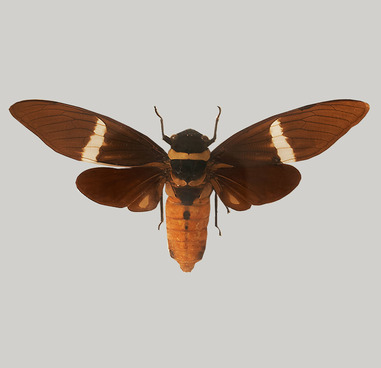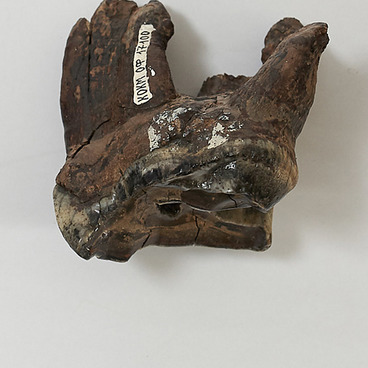Ankylosaurus, that is, the ‘bent lizard’, inhabited the Earth in the Cretaceous period, 66 million years ago. Its one-piece skeleton has not yet been found, but judging by the number of fragments of its bones and armor scattered across the continents, it was one of the most common species of the land fauna. Nowadays it would be considered a large animal with the length of 8 m, height of 2.4 m and weight of 6 tons, which is comparable to an African elephant. But then the peaceful herbivores were hunted by dreadful tyrannosaurs, with the height of 12 m and weight up to 12 tons.
Ankylosaurus got its name because of its curved spine. But the main distinguishing feature was not the spine, but the bone armor, that covered the back of the lizard. It consisted of bone cones and growths, which grew deep into the skin. They are called osteoderms. Crocodiles, armadillos and some lizards have similar protection nowadays. One such plate was discovered in 2017 by the paleontological expedition of the Kemerovo Museum of Local History. Before it was found, it had been believed that ankylosaurus had lived in the present-day North America, but then their habitat was extended to Siberia.
Armor alone was clearly not sufficient to protect against predators. It was enough to turn the lizard on its back and it became helpless, could not stand on its feet and was an easy prey. The only way out was to keep the predator at a distance. For that purpose, there was a bone mace at the end of the ankylosaurus’ tail. A powerful bone lump with a diameter of up to 45 cm was controlled by the muscles of the tail. The lizard could strike the attacker with that ball, capable of knocking it senseless or breaking its leg.
Judging by the absence of mass graves, ankylosaurus did not live in herds. Their jaws were adapted only for soft food like fruits, they could not eat hay or straw. Whole skeletons were not preserved, because the remains of lizards killed by predators were dragged by scavengers, among which there were the first mammals, including human ancestors. But the image of ankylosaurus restored by fragments suddenly turned out be in high demand in the popular culture. It became a hero of the Jurassic Park and Walking with dinosaurs movies.
Ankylosaurus got its name because of its curved spine. But the main distinguishing feature was not the spine, but the bone armor, that covered the back of the lizard. It consisted of bone cones and growths, which grew deep into the skin. They are called osteoderms. Crocodiles, armadillos and some lizards have similar protection nowadays. One such plate was discovered in 2017 by the paleontological expedition of the Kemerovo Museum of Local History. Before it was found, it had been believed that ankylosaurus had lived in the present-day North America, but then their habitat was extended to Siberia.
Armor alone was clearly not sufficient to protect against predators. It was enough to turn the lizard on its back and it became helpless, could not stand on its feet and was an easy prey. The only way out was to keep the predator at a distance. For that purpose, there was a bone mace at the end of the ankylosaurus’ tail. A powerful bone lump with a diameter of up to 45 cm was controlled by the muscles of the tail. The lizard could strike the attacker with that ball, capable of knocking it senseless or breaking its leg.
Judging by the absence of mass graves, ankylosaurus did not live in herds. Their jaws were adapted only for soft food like fruits, they could not eat hay or straw. Whole skeletons were not preserved, because the remains of lizards killed by predators were dragged by scavengers, among which there were the first mammals, including human ancestors. But the image of ankylosaurus restored by fragments suddenly turned out be in high demand in the popular culture. It became a hero of the Jurassic Park and Walking with dinosaurs movies.



